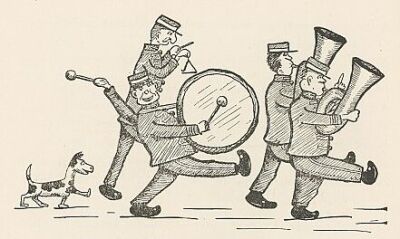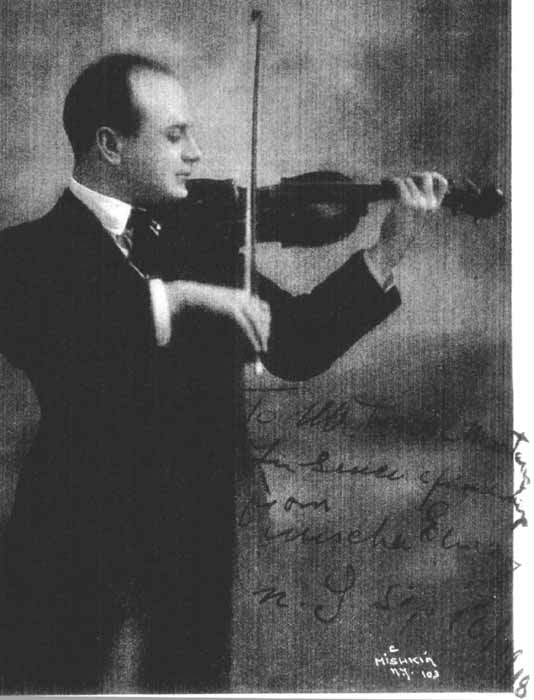One year ago to the day, my New Leaf Journal colleague, Victor V. Gurbo, published an article arguing that vintage guitars sound better than their newer counterparts. One year later, I thought that I would try my hand at some guitar content. However, I cannot play the guitar and know very little about them other than what Victor has explained to me. Left bereft of content, I searched the internet for an interesting point about guitars. I found one in Cicely Kent’s 1922 book, Telling Fortunes By Tea Leaves: How to Read Your Fate In a Teacup. While I have no doubt that there is much to say about reading one’s fate in in the dregs at the bottom of your teacup, we are going to skip past those sections of the book to Kent’s dictionary of symbols, wherein she explains the symbolism of many things.
The Symbolism Of the Guitar
Telling Fortunes By Tea Leaves includes a long dictionary of symbols. These symbols can show up in one’s teacup (or so I am told). The guitar is among the many symbols that Kent examined. What does the guitar symbolize?
[The guitar] symbol displays strong power of attraction for the opposite sex, and also pleasant adventures ending in a happy love affair.
Cicely Kent on the symbolism of the guitar (in tea leaves)
Is this why people play the guitar?

Global, an online music store based in the Philippines, published an entire article titled Why Are Women Attracted To Guitar Players? This blog post puts in many words what Kent put in one sentence. (To be clear, Kent’s view is that finding a guitar symbol means the same for a woman as it does for a man.)
One of the four reasons that Victor offered for vintage guitars being superior to non-vintage guitars was that vintage guitars can be unique. After making his case to support this point, he summarized his thoughts on the matter: “It’s in the mind, bro.”
Like Victor, we can summarize Kent’s view on the power of the guitar. “It’s the symbol, bro.”
How Does the Guitar Compare to Other Instruments?
Kent suggests that finding a guitar in a teacup is a good thing for anyone who hopes to attract another person of the opposite sex or to have pleasant adventures with such an individual ending in a happy love affair. But what of the other instruments that Kent covered in her dictionary of symbols? How do they compare to the guitar? Let us find out.
“Tambourine” and “Child with Tambourine”
The tambourine is one of the few instruments that I have ever played, if by “played” we include someone handing one to me in preschool.
But what does a tambourine symbolize? According to Kent, the symbolism of the tambourine itself is cold and hot:
[The tambourine is] a symbol of lighthearted gaiety which will follow a time of gloom or worry.
Whether this sign is good or bad may depend on perspective. If someone finds the tambourine in the midst of “a time of gloom or worry,” it may be uplifting. Conversely, if a person finds the tambourine in ordinary times, he or she may be forgiven for finding it to be a bit ominous.
Kent had a separate definition for the symbol of a child with a tambourine. I may be broadening the scope of this inquiry by including people with instruments, but it seems like we ought to address this one. The child with the tambourine is more unequivocally positive than the tambourine alone, symbolizing “pleasure, lightheartedness, and coming good news.”
Both the tambourine and the child with the tambourine symbolize good things in the long run. The difference is that the child with the tambourine is unequivocally lighthearted, while the tambourine alone foretells troubled waters before a time of “lighthearted gaiety.”
“Drum” and “Drummer”
What is the meaning of the drum symbol?
A hazardous enterprise or expedition…
Well that is a bit ominous. I dare say this sounds like a martial interpretation of the drum symbol.
Kent includes “drummer” as a separate symbol from “drum.” Since I have already stretched the definition of “instrument” symbol to include a child with a tambourine, I suppose that drummer should be included too. Victor’s band, Victor V. Gurbo & Co., has a drummer, so we can consider how the drum symbol interacts with the guitar.

For a man, the drummer symbol “foreshadows popularity and a successful public career.” If a woman receives the drummer symbol, it foreshadows “social success, a large following of friends and admirers, and power of gaining her own ends.” There could be some interesting interplay between a man receiving the guitar symbol and a woman receiving the drummer symbol. In any event, the drummer symbol seems to be associated with more positive things than the drum alone.
“Gong-and-Stick”
We go to the orient for our next musical symbol. According to Kent, “this symbol warns you to expect little else than the ‘trivial round and common task’ for the present.” This is not bad per-se. It is better than the drum, at least. I suppose this one depends on the mindset with which one approaches common tasks.
“Gramophone”
While a gramophone is not an instrument, I think we can count things designed to play music. They were in vogue around the same time as some of Victor’s vintage guitars were being manufactured. What does the gramophone symbolize? The gramophone “usually portends vexation at being drawn into a somewhat disorderly and noisy pleasure.”
Many guitarists would be happy with others receiving the gramophone symbol. Whatever gets people through the door.
“Lute”
The lute should make for an interesting comparison to the guitar, its fellow string instrument. Kent’s breakdown of the lute symbol is interesting in that she separates the symbolism of a lute for a musician from the symbolism of a lute for non-musicians.
If I found a lute symbol, it would mean “a sign of secret sadness of which those around you know nothing.” That is more than a bit melancholy.
If Victor, a musician, found the lute, it would be “a good omen of success.”
Someone should poll guitarists to find out of they prefer the guitar symbol or the lute symbol.
Lion + Lute
Kent’s dictionary includes some combinations of symbols. One combination she discusses is a lion symbol combined with a lute symbol. What do these symbols mean together?
Rising to the top of the tree, as a musician, is assured by these symbols.

I doubt many musicians would turn this tea-leaf duo down.
“Music Conductor”
“Music conductor” is, again, not an instrument. But having allowed gramophone, I suppose that I ought to cover the music conductor as well. Just as she did with the lute, Kent determined that the music conductor symbol means something different for musicians and non-musicians. For musicians, the music conductor symbol is a “good sign.” To non-musicians, “it suggests that enthusiasm and good spirits will carry them through life very happily.”
I dare say the music conductor symbol is a better find for non-musicians than musicians. For musicians, this sounds like drawing a fortune that is somewhere in the range of “decent.” What is a “good sign”? If I were a musician, I would much prefer the lute (“a good omen of success”) to a vague “good sign.”
“Pan and His Pipes”
Since there is precedent for people with instruments, Pan and his pipes must make the list. The symbolism here is overwhelmingly positive: “A most cheering symbol which gives an assurance of happiness, future prosperity, and delight.”
Interestingly, Kent includes “Pan and His Pipes” as a see also for “Pipe” and “Meerschaum Pipe,” even though the latter two definitions refer to tobacco pipes rather than musical pipes. A curious choice.
“Piano”
We finally find another instrument without more. The piano remains a fixture today, and Victor’s band has a talented pianist. What does the piano symbolize? As with the lute, the piano symbolizes something different for musicians and non-musicians.
Kent began with non-musicians:
This is a sign that you will make the most of your opportunities and will gain that for which you have aimed…
While the symbolism of the piano for non-musicians is not the exact opposite of the symbolism of the gong, it is certainly at tension. The gong tells he or she who finds it to expect nothing beyond the mundane, ordinary, and trivial. Conversely, the piano symbol tells those who find it that they will not only have opportunities, but also make the most of them and achieve their objectives.
For musicians, the piano is “a sign of advancement.”

I think that many up-and-coming musicians would be more than happy to find a piano in the tea-leaves.
Violin
After some borderline include-or-not-include cases, we end our survey with a string instrument – the violin. Kent ascribes different meanings of the violin for musicians and non-musicians.
For a musician, the violin is a symbol of coming success. For others, it is a symbol of “pleasure and entertainment.”

The violin is similar to the lute. The lute is a good omen of success for a musician. The violin symbolizes coming success. The lute is a good sign whereas the violin seems a bit more definite. Which is better? That is difficult to say – but both are better than the dull conductor symbol, at least.
Is the Guitar the Best Symbol?

I began the inquiry to see how the guitar symbol compares to other musical instruments in Kent’s dictionary. Here, I will not consider the people with instruments and only consider the definitions for instruments themselves (the gramophone will be similarly excluded).
The guitar is unique in that it is the only instrument besides the gong that does not have a separate definition for musicians and non-musicians. It emits the same pheromones irrespective of who finds it.
I think that the lute and the violin, which both portend success in the field of music, are preferable symbols for a professional musician. Moreover, my understanding is that success in the areas covered by the guitar is often associated with success for musicians.
However, I think that the piano is the best symbol for a professional musician. That it symbolizes “advancement” reflects what almost all up-and-coming musicians seek in their careers.
While the drummer is positive, I interpret its references to public careers (men) and “social success” (women) to be in non-musical areas. Moreover, we must consider that the “drummer” symbol erred on the ominous end of the symbol spectrum. The tambourine may be a fine symbol for a musician going through a hard spell, but it seems inferior in all respects to the lute and the violin for most musicians.
If we allow combinations of symbols, the lute and the lion would be the best of the symbols for an ambitious musician.
Although the guitar may not be the best symbol here for a professional musician, it stands above others for those less serious musicians than the distinguished Victor V. Gurbo who only take up an instrument in an attempt to look cool.